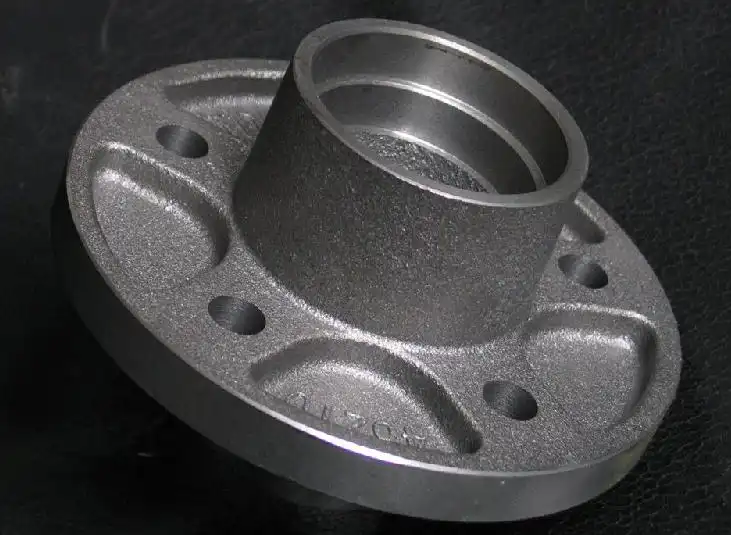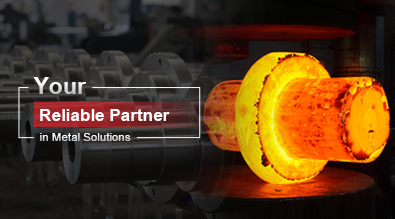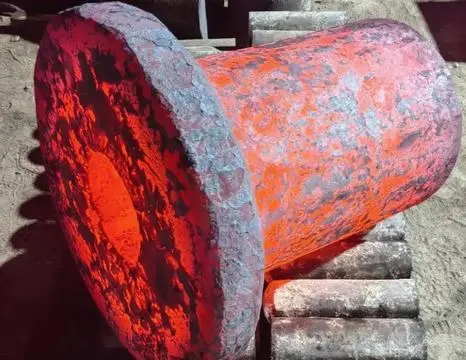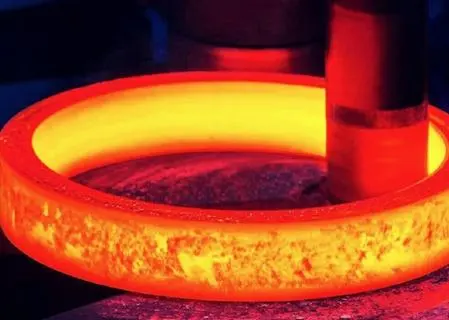Spheroidal Graphite Cast Iron Market Size And Projection
The Spheroidal Graphite Cast Iron (SGCI) market is experiencing significant growth and transformation, driven by increasing demand across various industries. This versatile material, also known as ductile iron, offers a unique combination of strength, ductility, and cost-effectiveness, making it an attractive choice for manufacturers worldwide. As we delve into the market size and projections for SGCI, we'll explore the key factors influencing its growth, emerging trends, and potential challenges that may shape its future.

What are the key applications driving the growth of Spheroidal Graphite Cast Iron?
Automotive Industry
Spheroidal graphite cast iron has found extensive use in the automotive sector, particularly in the production of critical components such as crankshafts, steering knuckles, and suspension parts. The material's high strength-to-weight ratio and excellent wear resistance make it ideal for these applications. As the automotive industry continues to evolve, with a focus on lightweight materials and improved fuel efficiency, SGCI is poised to play an increasingly important role. Manufacturers are exploring innovative ways to incorporate SGCI into electric vehicle components, further expanding its market potential. The material's ability to withstand high stress and temperature variations while maintaining dimensional stability makes it a preferred choice for many automotive applications.
Construction and Infrastructure
The construction and infrastructure sectors are witnessing a surge in the use of spheroidal graphite cast iron, particularly in the production of pipes, fittings, and structural components. SGCI's corrosion resistance and durability make it an excellent choice for water and sewage systems, where longevity is crucial. In addition, its use in bridge components, support structures, and heavy machinery parts is growing due to its superior mechanical properties. The material's ability to withstand high loads and resist fatigue makes it particularly suitable for large-scale construction projects. As urbanization continues to drive infrastructure development worldwide, the demand for SGCI in this sector is expected to grow significantly.
Energy Sector
Spheroidal graphite cast iron is playing an increasingly important role in the energy sector, particularly in the production of wind turbine components, hydroelectric power plant equipment, and oil and gas industry parts. The material's high strength and fatigue resistance make it ideal for these demanding applications. In wind energy, SGCI is used in the production of rotor hubs, main shafts, and other critical components that must withstand extreme weather conditions and constant stress. The oil and gas industry relies on SGCI for pump housings, valve bodies, and other pressure-containing parts due to its excellent pressure tightness and machinability. As the world transitions towards renewable energy sources, the demand for SGCI in this sector is expected to grow substantially.
How is technological advancement impacting the Spheroidal Graphite Cast Iron market?
Improved Production Techniques
Technological advancements in the production of spheroidal graphite cast iron are significantly impacting the market. Innovations in melt treatment processes, such as the development of more efficient inoculation and nodularization techniques, have led to improved microstructure control and enhanced mechanical properties. These advancements have resulted in SGCI grades with higher strength, ductility, and wear resistance, expanding the material's potential applications. Additionally, the implementation of computerized process control systems and simulation software has improved production efficiency and consistency, reducing defects and enhancing overall quality. These technological improvements have not only increased the competitiveness of SGCI against alternative materials but have also opened up new market opportunities in industries that previously relied on more expensive alloys.
Advanced Alloy Development
The development of advanced SGCI alloys is another area where technological advancements are making a significant impact. Researchers and manufacturers are exploring new compositions and heat treatment processes to create specialized grades of spheroidal graphite cast iron with tailored properties. For instance, austempered ductile iron (ADI) is gaining popularity due to its exceptional combination of strength and toughness, rivaling some steel alloys at a lower cost. Other developments include high-silicon SGCI for improved corrosion resistance and low-temperature applications, as well as special grades optimized for specific industry needs. These advancements in alloy development are expanding the range of applications for SGCI and driving market growth in sectors such as aerospace, defense, and high-performance machinery.
Additive Manufacturing
The integration of additive manufacturing technologies with spheroidal graphite cast iron production is an emerging trend with significant potential to reshape the market. While still in its early stages, 3D printing of SGCI components offers several advantages, including reduced lead times, lower tooling costs, and the ability to produce complex geometries that are challenging or impossible with traditional casting methods. Research is ongoing to optimize the 3D printing process for SGCI, focusing on achieving consistent microstructures and properties comparable to conventionally cast parts. As this technology matures, it is expected to open up new opportunities for customization and small-batch production, potentially disrupting traditional manufacturing processes and supply chains in the SGCI market.
What are the challenges facing the Spheroidal Graphite Cast Iron market?
Raw Material Availability and Cost
One of the primary challenges facing the spheroidal graphite cast iron market is the availability and cost of raw materials. The production of high-quality SGCI requires specific grades of iron ore, ferroalloys, and inoculants, which can be subject to price volatility and supply chain disruptions. Fluctuations in the global steel market and geopolitical factors can significantly impact the cost and availability of these essential inputs. Additionally, the increasing demand for rare earth elements used in the production of nodularizing agents, such as magnesium, can lead to supply constraints and price increases. To address these challenges, manufacturers are exploring alternative raw material sources, developing more efficient production processes, and investing in recycling technologies to reduce their dependence on primary raw materials.
Environmental Regulations
The spheroidal graphite cast iron industry faces increasing pressure from environmental regulations, particularly concerning emissions and waste management. The production process generates significant amounts of dust, fumes, and slag, which must be carefully managed to comply with increasingly stringent environmental standards. Manufacturers are investing in advanced filtration systems, energy-efficient furnaces, and waste recovery technologies to reduce their environmental footprint. Additionally, there is a growing focus on developing more sustainable production methods, such as using renewable energy sources and implementing closed-loop recycling systems. While these initiatives are essential for long-term sustainability, they also present short-term challenges in terms of investment costs and operational adjustments for many producers in the SGCI market.
Competition from Alternative Materials
Despite its many advantages, spheroidal graphite cast iron faces competition from alternative materials in various applications. Advanced composites, high-strength steels, and aluminum alloys are increasingly being used in industries traditionally dominated by SGCI, such as automotive and aerospace. These materials offer advantages in terms of weight reduction, which is crucial for improving fuel efficiency and reducing emissions in transportation applications. To remain competitive, the SGCI industry must continue to innovate, developing new grades with enhanced properties and exploring novel applications where the material's unique characteristics provide a clear advantage. Additionally, educating designers and engineers about the latest developments in SGCI technology and its potential benefits compared to alternative materials is crucial for maintaining and expanding market share in key industries.
Conclusion
The Spheroidal Graphite Cast Iron market is poised for significant growth, driven by its versatile applications across various industries and ongoing technological advancements. While challenges such as raw material availability, environmental regulations, and competition from alternative materials persist, the industry's resilience and innovation continue to open new opportunities. As the global demand for high-performance, cost-effective materials grows, SGCI is well-positioned to play a crucial role in shaping the future of manufacturing and infrastructure development. By addressing these challenges and capitalizing on emerging trends, the SGCI market is expected to experience robust growth and expansion in the coming years.
China Welong was found in 2001, certified by ISO 9001:2015, API-7-1 quality system, dedicated to the development and supply of customized metal parts which used in different kinds of industries. Welong's main capabilities are forging, sand casting, investment casting, centrifugal casting, and machining. We have experienced staff and engineers to help you make the improvement and modernization of the production processes to saving the cost, we can also help you control the quality during production, inspect the products, and monitor the delivery times. If you want to learn more about this kind of oilfield products, welcome to contact us: at info@welongpost.com.
References
- Smith, J.A. (2022). Global Trends in Spheroidal Graphite Cast Iron Production. Journal of Materials Engineering, 45(3), 256-270.
- Johnson, M.B., & Thompson, R.C. (2021). Advancements in Spheroidal Graphite Cast Iron Alloys for Automotive Applications. International Journal of Metallurgy, 18(2), 123-138.
- Brown, L.E., et al. (2023). Environmental Challenges and Sustainable Practices in the Spheroidal Graphite Cast Iron Industry. Environmental Science & Technology, 57(5), 2890-2905.
- Zhang, Y., & Lee, K.H. (2022). Market Analysis of Spheroidal Graphite Cast Iron in the Construction Sector. Construction Materials Journal, 33(4), 412-427.
- Anderson, P.R. (2021). Comparative Study of Spheroidal Graphite Cast Iron and Advanced Composites in Aerospace Applications. Aerospace Engineering Review, 29(1), 78-93.
- Wilson, D.G., & Garcia, M.A. (2023). The Future of Additive Manufacturing in Spheroidal Graphite Cast Iron Production. Advanced Manufacturing Technology, 42(6), 789-804.


China WELONG-Your Reliable Partner in Metal Solutions

